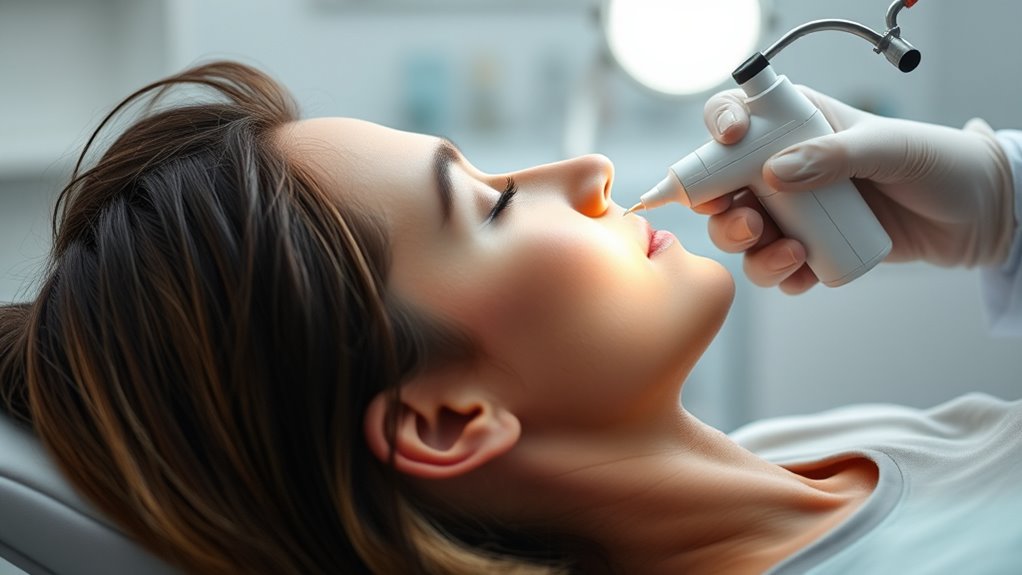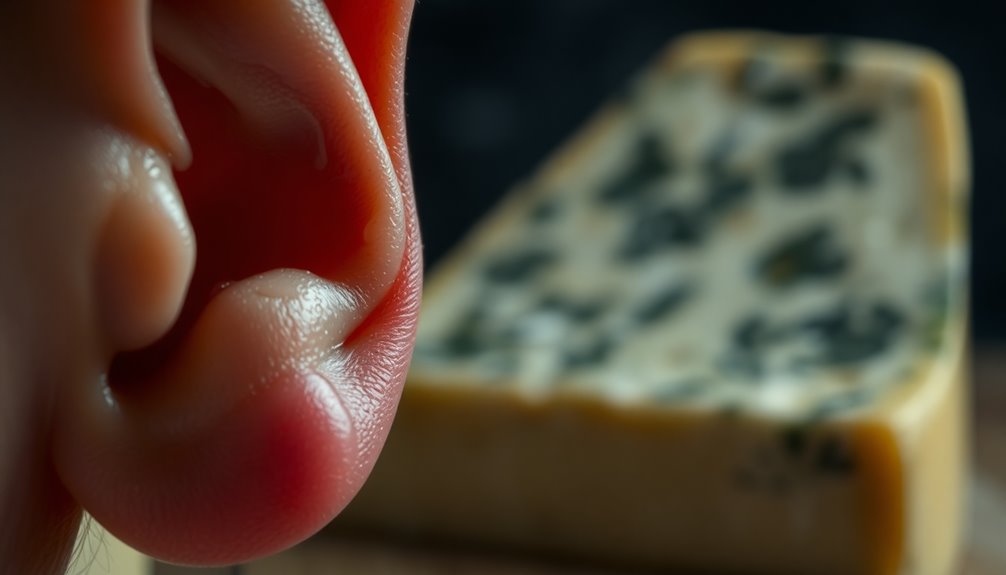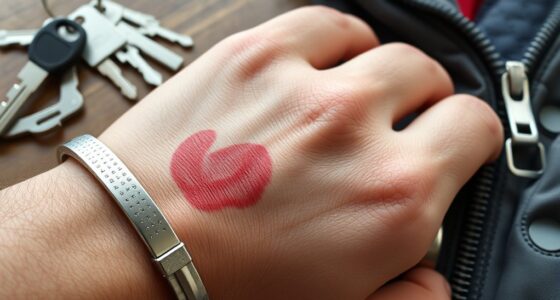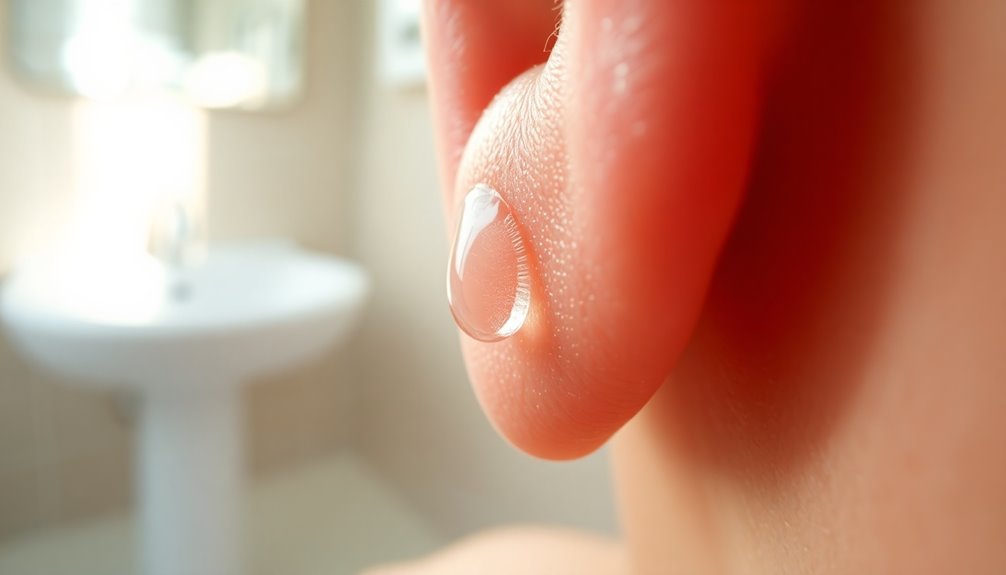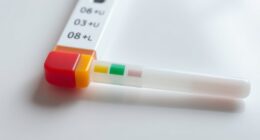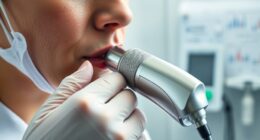To safely remove earwax, use ear drops like mineral oil or OTC solutions to soften the wax, then gently wipe the outer ear with a damp cloth. Avoid inserting cotton swabs or sharp objects deep in your ear, as they can cause damage. If you experience persistent issues or discomfort, it’s best to see a professional. Keep exploring to find out more about what methods work best and what to avoid.
Key Takeaways
- Use ear drops like mineral or olive oil to soften wax before natural removal; avoid inserting objects into the ear canal.
- Do not use cotton swabs, sharp objects, or ear candles, as they can push wax deeper or cause injury.
- Gentle cleaning of the outer ear with a damp cloth is safe; avoid probing inside the ear.
- Seek professional help if wax persists, causes discomfort, or if you experience pain, bleeding, or hearing loss.
- Regularly dry ears after swimming or bathing and avoid over-cleaning to prevent unnecessary wax buildup.
Understanding Earwax and Its Role in Ear Health
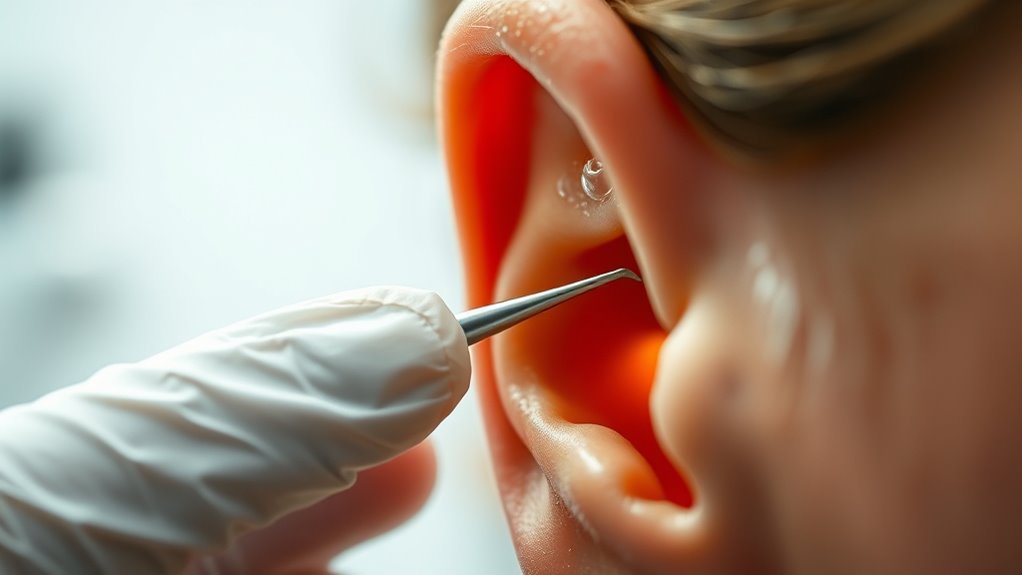
Earwax, also known as cerumen, plays a vital role in maintaining ear health. It acts as a natural barrier, trapping dust, dirt, and microorganisms that could cause infections. Your ear produces wax to protect the delicate skin inside the ear canal and prevent debris from reaching the eardrum. Earwax also has antibacterial and antifungal properties, reducing the risk of infections. Additionally, it helps keep the ear canal moisturized, preventing dryness and itching. The amount of wax your ear produces varies from person to person and can change over time. Typically, earwax moves naturally out of the ear through jaw movements like chewing and talking. Understanding this process helps you appreciate the importance of letting your ears clean themselves naturally, avoiding unnecessary interference. Being aware of the potential small mistakes in ear care practices can help prevent damage or infections.
Safe Methods for Removing Earwax at Home

Since your ears are designed to clean themselves naturally through movements like speaking and chewing, most of the time you don’t need to intervene. If you feel earwax buildup, gentle methods can help. One safe option is softening the wax with a few drops of mineral oil, olive oil, or over-the-counter ear drops. Let the drops sit for several minutes, then tilt your head to drain the softened wax. You can also use a warm, damp washcloth to clean the outer ear gently. Avoid inserting cotton swabs or any objects deep into your ear canal, as this can push wax further in or cause injury. Remember, patience is key—if the wax doesn’t clear or you experience discomfort, consult a healthcare professional instead of trying more aggressive home remedies. Additionally, understanding earwax removal methods can help you make informed choices about safe practices.
Techniques and Treatments to Avoid
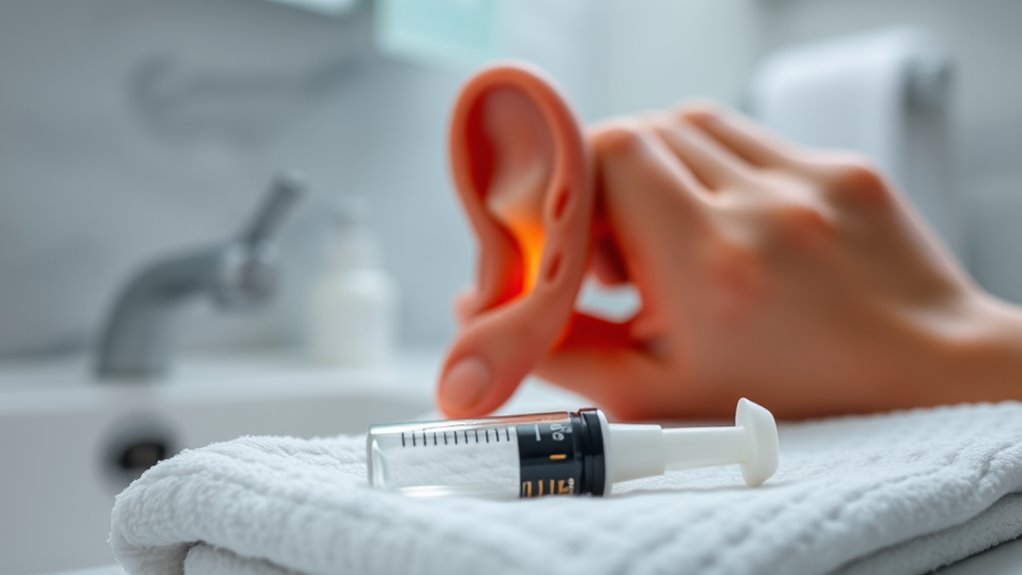
While it might be tempting to try aggressive or unconventional methods to remove earwax, certain techniques can do more harm than good. Avoid these common but risky practices:
- Using cotton swabs deep inside the ear canal, which can push wax further in or damage the eardrum.
- Inserting hairpins, paperclips, or other sharp objects that can puncture or scratch your ear.
- Using ear candles, which lack scientific support and pose a risk of burns or ear injuries.
- Applying hydrogen peroxide or other chemical solutions excessively, risking irritation or burns.
- Attempting to irrigate with high-pressure water, which can cause ear damage or infections if not done properly.
Steering clear of these risky methods helps prevent injury and keeps your ears healthy.
When to Seek Professional Help
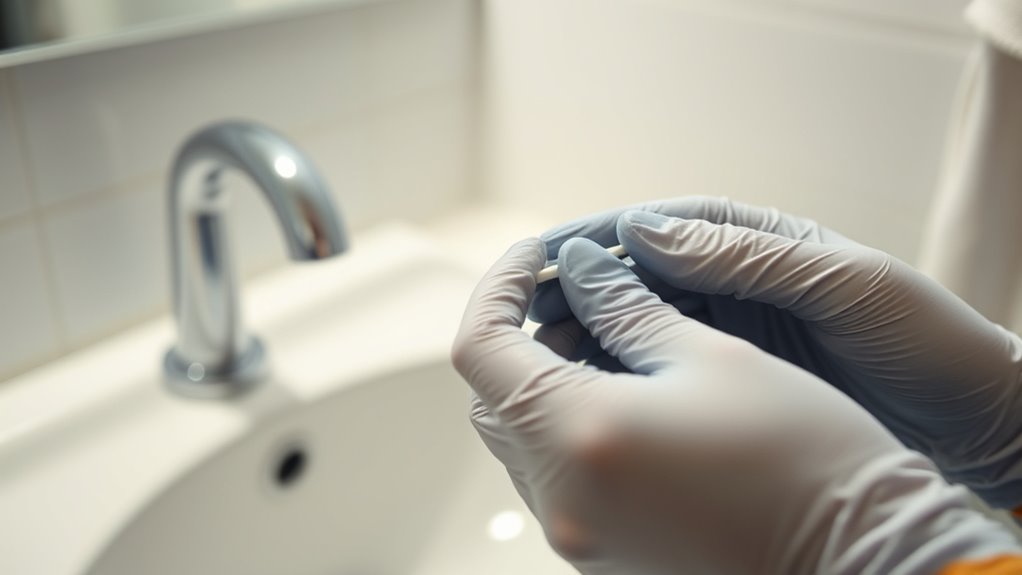
You should seek professional help if you experience persistent discomfort, pain, or a feeling of fullness in your ear. These symptoms could indicate impacted earwax or an infection that requires medical attention. Additionally, if you notice decreased or muffled hearing, bleeding, or discharge, see a healthcare provider promptly. Attempting to remove earwax yourself with unsafe tools can worsen the blockage or damage your eardrum. If over-the-counter remedies haven’t worked after several days, it’s best to consult a professional. They have specialized tools like ear suction devices or irrigation kits that safely eliminate wax without risking injury. Don’t ignore ongoing symptoms; timely professional intervention can prevent complications and ensure your ear health remains protected. Understanding the importance of proper earwax removal can help prevent injury and maintain ear health.
Tips for Preventing Earwax Buildup
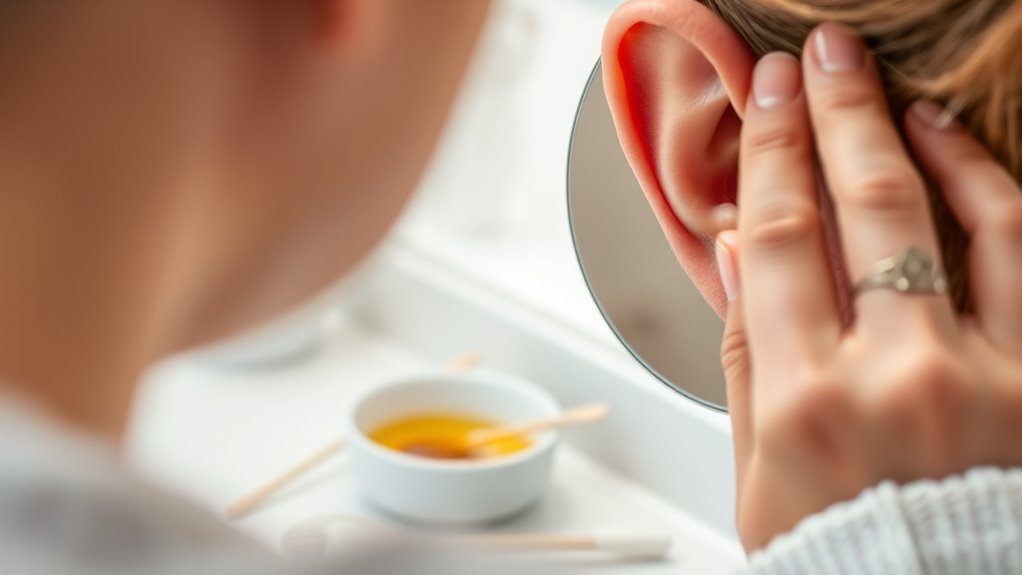
Preventing earwax buildup starts with simple daily habits. First, avoid inserting objects like cotton swabs into your ears, as they push wax deeper and can cause impaction. Second, keep your ears dry; after swimming or showering, dry your ears thoroughly. Third, resist the urge to over-clean; ears generally clean themselves naturally. Fourth, maintain good ear hygiene by wiping the outer ear with a damp cloth, not probing inside. Fifth, consider using ear drops periodically if you’re prone to buildup, but only as directed by a healthcare professional. These habits help maintain a healthy balance of earwax, preventing excess accumulation that can lead to discomfort or blockages. Additionally, understanding the Gold IRA Rollovers process can provide financial security and diversification for your retirement planning. Consistent care supports your ear health and reduces the need for invasive removal methods.
Myths and Facts About Earwax Removal
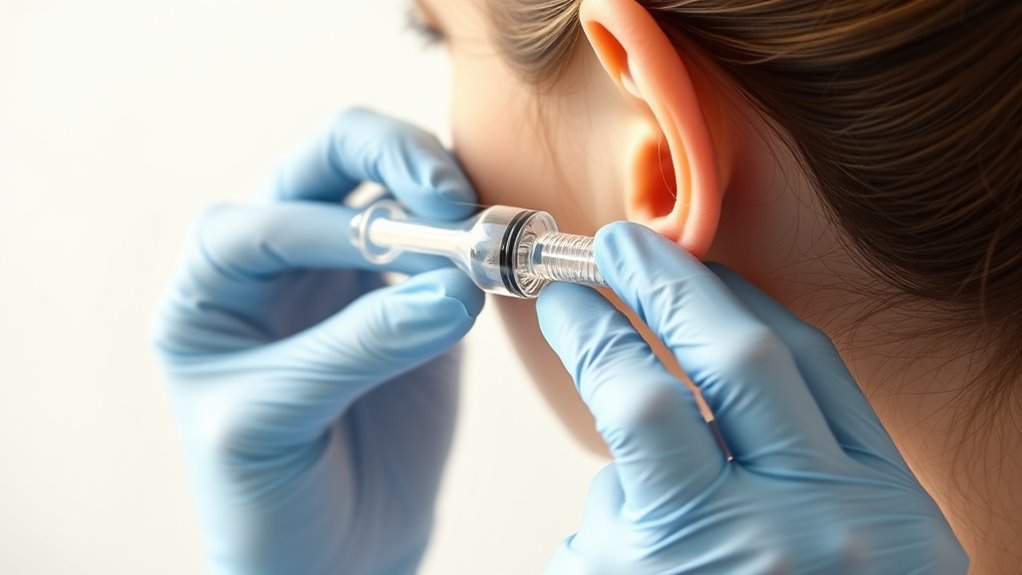
Are myths about earwax removal leading you astray? Many believe that sticking objects like cotton swabs deep into your ear clears wax, but this can push wax further in or damage your eardrum. Another common myth is that earwax must always be removed; in reality, it protects your ear and usually exits naturally. Some think using ear candles is effective, but evidence shows they’re unsafe and ineffective. Fact is, gentle methods like ear irrigation or seeking professional help are safest. Earwax isn’t always a problem needing removal, and over-cleaning can cause more harm than good. Knowing these facts helps you avoid risky practices and ensures you take proper steps, keeping your ears healthy and safe. Additionally, understanding the natural process of earwax can help prevent unnecessary interventions and maintain ear health.
Frequently Asked Questions
Can Earwax Removal Affect Hearing Permanently?
You might wonder if removing earwax can cause permanent hearing loss. If done improperly or forcefully, it can damage your eardrum or ear canal, leading to lasting issues. However, when performed safely, such as with gentle methods or professional help, it shouldn’t harm your hearing. It’s essential to avoid inserting objects into your ear and seek professional advice if you’re unsure about the best way to clear wax.
Are There Specific Age Groups More Prone to Earwax Buildup?
Imagine a gentle tide that flows more strongly at certain shores—that’s how earwax buildup varies across age groups. Younger children and older adults tend to be more prone because their ear cleaning habits change, and natural processes slow down. As you age, your ears produce and clear wax differently, making some age groups more susceptible. Staying attentive and practicing safe habits helps prevent discomfort and maintains your hearing health.
How Often Should I Check My Ears for Wax Buildup?
You should check your ears for wax buildup every few months, especially if you notice symptoms like muffled hearing or discomfort. Regularly inspecting your ears helps prevent excessive buildup that can cause issues. However, don’t insert objects into your ears; instead, look for signs like wax blocking the ear canal or a change in hearing. If you’re unsure, consult a healthcare professional for advice.
Do Natural Oils Help in Earwax Softening?
Natural oils can help in earwax softening, making removal easier and safer. You might consider using mineral oil, olive oil, or almond oil, applying a few drops into your ear to loosen stubborn wax. This gentle approach works by softening the buildup, easing it out naturally, and reducing discomfort. Remember, always use oils at room temperature and avoid inserting anything deep into your ear to prevent injury.
Is It Safe to Use Ear Candles at Home?
Using ear candles at home isn’t safe, and health experts strongly advise against it. The process involves inserting a lit, hollow candle into your ear, which can cause burns, ear injuries, or even eardrum damage. Instead, you should see a healthcare professional if you suspect earwax buildup. They can safely remove earwax with proper tools and techniques, protecting your hearing and ear health.
Conclusion
Remember, knowing what works and what doesn’t can save you a lot of trouble. Stick to safe methods and don’t attempt to dig out earwax yourself if you’re unsure. If problems arise, don’t hesitate to seek professional help—better safe than sorry. Think of your ears as delicate gardens; with proper care and attention, you can keep them healthy and wax-free without risking a thorn in your side. Stay cautious and keep your ears happy!
